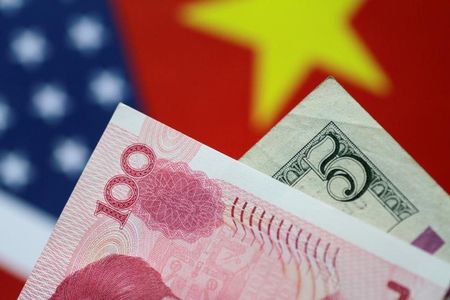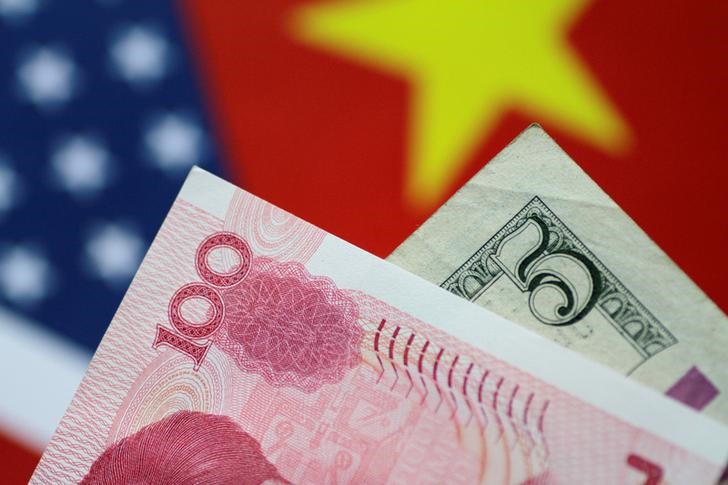Forex
Asia FX gains some ground as dollar retreats; China weakness persists


© Reuters.
Investing.com– Most Asian currencies advanced slightly on Thursday as the dollar and Treasury yields pulled further away from recent peaks, although persistent signs of deflation in China kept sentiment subdued.
Markets were now awaiting more cues on U.S. interest rates after largely dialing back expectations for early rate cuts by the Federal Reserve, following a string of robust economic readings and hawkish comments from Fed officials.
This trend largely curbed a rally in the dollar, with the greenback pulling back further from a three-month high hit earlier this week. U.S. Treasury yields also retreated from recent highs.
The and fell 0.1% each in Asian trade, extending sharp overnight declines. for January, due next week, is now in focus for more cues on the path of interest rates.
Most Asian currencies crept higher. The was among the better performers for the day, rising 0.1% and extending gains from earlier this week after the warned that it could still hike interest rates in the face of sticky inflation.
The firmed 0.1%, moving further away from near record-low levels as traders awaited a meeting later in the day. The RBI is widely expected to keep rates on hold, while its forecasts on inflation and economic growth will be in close focus.
The fell 0.1% and remained in sight of a two-month low, amid persistent uncertainty over when the Bank of Japan will begin scaling back its ultra-loose policy.
The and moved little.
The slid 0.5% after a Bank of Thailand official said that the bank stood ready to cut interest rates if private consumption slowed further in the country.
Any major gains in Asian units were largely held back by concerns over higher-for-longer U.S. interest rates, as a chorus of Fed officials warned this week that the bank was not considering any monetary loosening in the near-term.
Signs of persistent economic weakness in China also dented sentiment towards the region, as Asia’s largest economy continued to grapple with disinflation.
Yuan weak as Chinese inflation data underwhelms
The moved little on Thursday, amid continued support from the People’s Bank of China, which was seen intervening in currency markets earlier this month. But the weakened past the 7.2 level against the dollar, and remained close to a 2-1/2 month low.
Official data showed grew less than expected in January, while contracted for a sixteenth consecutive month.
The also clocked its worst monthly decline since late-2009, indicating that discretionary spending in the country remained largely subdued amid worsening economic conditions.
However, analysts at ING said January’s inflation data marked a bottom for the current deflation cycle, and that inflation was likely to pick up in the coming months.
Demand was also likely to be supported in February by the upcoming Lunar New Year holiday. Chinese markets will be closed for a week starting from this Friday.

 Forex3 years ago
Forex3 years agoForex Today: the dollar is gaining strength amid gloomy sentiment at the start of the Fed’s week

 Forex3 years ago
Forex3 years agoUnbiased review of Pocket Option broker

 Forex3 years ago
Forex3 years agoDollar to pound sterling exchange rate today: Pound plummeted to its lowest since 1985

 Forex3 years ago
Forex3 years agoHow is the Australian dollar doing today?

 Cryptocurrency3 years ago
Cryptocurrency3 years agoWhat happened in the crypto market – current events today

 World3 years ago
World3 years agoWhy are modern video games an art form?

 Commodities3 years ago
Commodities3 years agoCopper continues to fall in price on expectations of lower demand in China

 Economy3 years ago
Economy3 years agoCrude oil tankers double in price due to EU anti-Russian sanctions





















